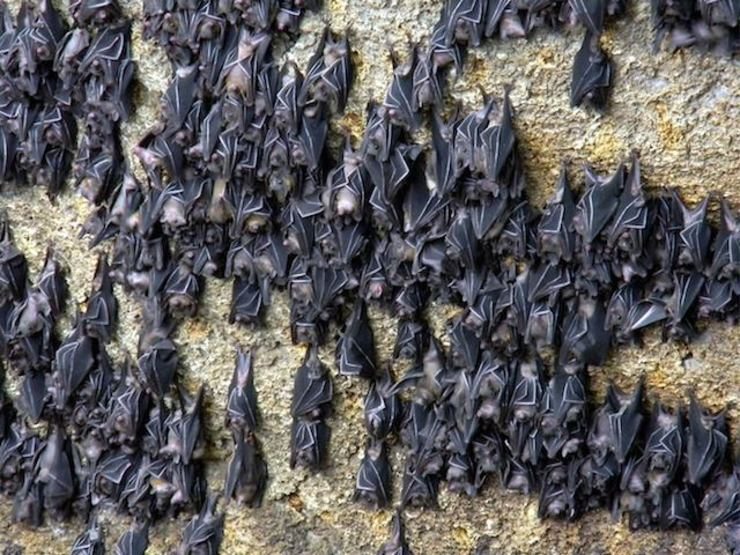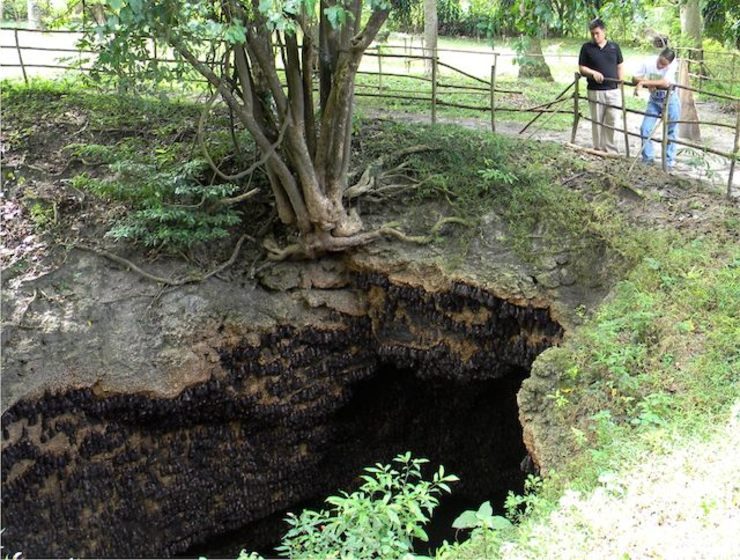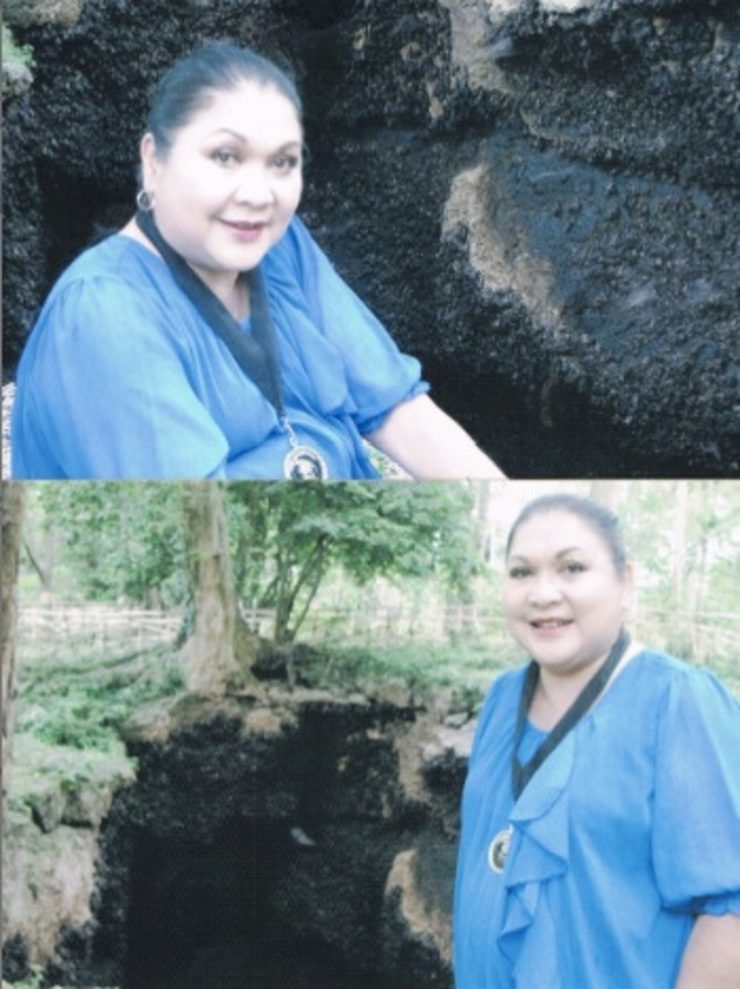SUMMARY
This is AI generated summarization, which may have errors. For context, always refer to the full article.

DAVAO CITY, Philippines – From the time the Monfort Bat Sanctuary, in the Island Garden City of Samal, was declared as having the world’s biggest colony of fruit bats, the population has now boomed to 2.5 million.
In 2010, staff from the Guinness Book of World Records came and found out there were about 1.8 million bats residing in the 245 foot-long (75 meter-long) cave. That’s a density of 645 bats per square meter.
The following year, an American cave-mapping expedition stumbled upon an unusually high number of pregnant bats in the Monfort bat colony. The bat species does not usually give birth in the first month of the year, making the discovery a “big surprise” and forcing the scientists to halt their mapping project, reports Norma Monfort, owner of the bat sanctuary.
The cause of the bat baby boom is unknown. However, Monfort suspects one factor may be that the cave is protected from the disturbance of human beings as it is now an ecotourism site, which allows their numbers to grow.
With more bats coming, Monfort is in a quandary. There are too many bats inhabiting the cave. This made her to think of setting up a chiropterium, a combination of the word “chiroptera” (for hand wing bats) and “torium” from auditorium.
“Since 2011, my vision is to build a chiropterium,” said Monfort.
So far, there’s only one such structure in the world and it can be found in Texas, United States.
“I’m already in contact with them and as soon I can raise funds I will start the construction,” Monfort was quoted as saying. “The city of Samal is already thinking how to build it with me.”
Monfort also wants to put up an artificial bat cave for interactive viewing of both visitors and researchers.
“This will eradicate the two nagging questions: Can humans transmit diseases to bats with the growing numbers of visitors coming to see the bats? Would these increasingly horrific numbers of bat population transmit any diseases to humans?” she explained.
She added: “So far, there are no researches done on these. But what we know is that since the existence of these bats in the island, there has been no record of diseases or even rabies coming from bats.”

Although she lives in Davao City, Monfort goes to her Samal property every now and then. When she’s there, she roams around the property. With a notebook, she writes down the things her staff has to attend to.
“It is tough for me because the property is slightly sloping and I get overwhelmed with the size of the land,” she said. “But I have to do it. This may be the last bastion of bats in the country in the near future.”
When she enters the sanctuary, referring to the bat cave, she talks to her “angels” and say, “Hi! Bat Mama is here.”
“Everything remains rustic,” she said, “and I just try to use indigenous materials. I also make sure that the bats are fully protected.”
The bats that inhabit Monfort’s place are called Geoffroy’s rousette fruit bats (Rousettus amplexicaudatus).
The fruit bats have been there since the very beginning. She was barely walking when the family would seek shelter inside the cave during the Second World War. Japanese war planes would circle around Samal Island before bombing the adjacent Davao. “Together with some of our neighbors, we would run to the backyard cave,” she said.
Only few bats inhabited the cave at that time. When the war was over, the family built a house near the cave. The family moved to Davao and lived there. But during weekends and holidays, she would accompany her father going to the farm, which she called their Samal residence.
When she was already a teenager, Monfort and some of her friends would venture inside the cave to see the bats. “To me it was a ‘matter-of-fact thing.’ I don’t recall being amazed,” she admitted. “It was simply, these are bats!”
But growing up and seeing bats made her want to take care of the creatures. She describes them as “meek and gentle and keep grooming themselves.”
When they come out at night, they go out in an orderly manner like doing a circadian flight. “Instead of fear, I feel being amazed and stand in awe before such a great sight,” she said. “You marvel and become inspired by God’s creation.”

Fortunately, her parents gave the land as her inheritance. Monfort loves the bats that she thought of protecting them from leaving the cave. But with the government’s agrarian reform laws, which limit individual ownership of agricultural land, she may lose the land where the bats are dwelling.
She raised her own funds to bring the respected scientists from the Bat Conservation International (BCI) to her cave to advise on the best way to ensure the continued protection of her bats. Together with the BCI and 6 other government and non-governmental organizations, Monfort signed an agreement protecting the cave as the Monfort Bat Conservation Park in 2006.
Within 6 months, Monfort also created the Philippines Bat Conservation, an environmental group that reaches beyond her colony to promote conservation of all Philippine bat species.
In 2011, Monfort was honored as one of the “Disney Worldwide Conservation Fund Conservation Heroes.” The award is bestowed to “extraordinary individuals who are passionate about protecting animals and habitats in areas of critical concern.”
Winning the award, she said, means helping further the cause of bat conservation in the country and elsewhere. In a letter sent to her friends, she wrote: “That I have been given this recognition is simply signaling more work lies ahead for me using this ‘tool’ and putting it into good use….There is so much to be accomplished that I plan to leave behind for the children of the world.” – Rappler.com
Samal Island is situated 20 minutes away from Davao, across the Davao Gulf. This beautiful island is home to pristine coastlines and wildlife. Take your adventures to a whole new level and visit Davao with Philippine Airlines, find good deals here!
Add a comment
How does this make you feel?
There are no comments yet. Add your comment to start the conversation.